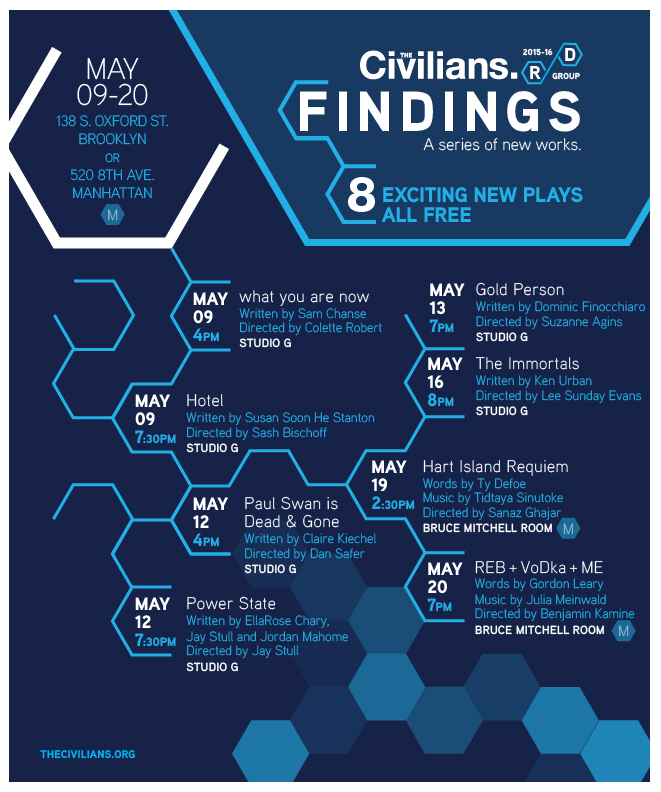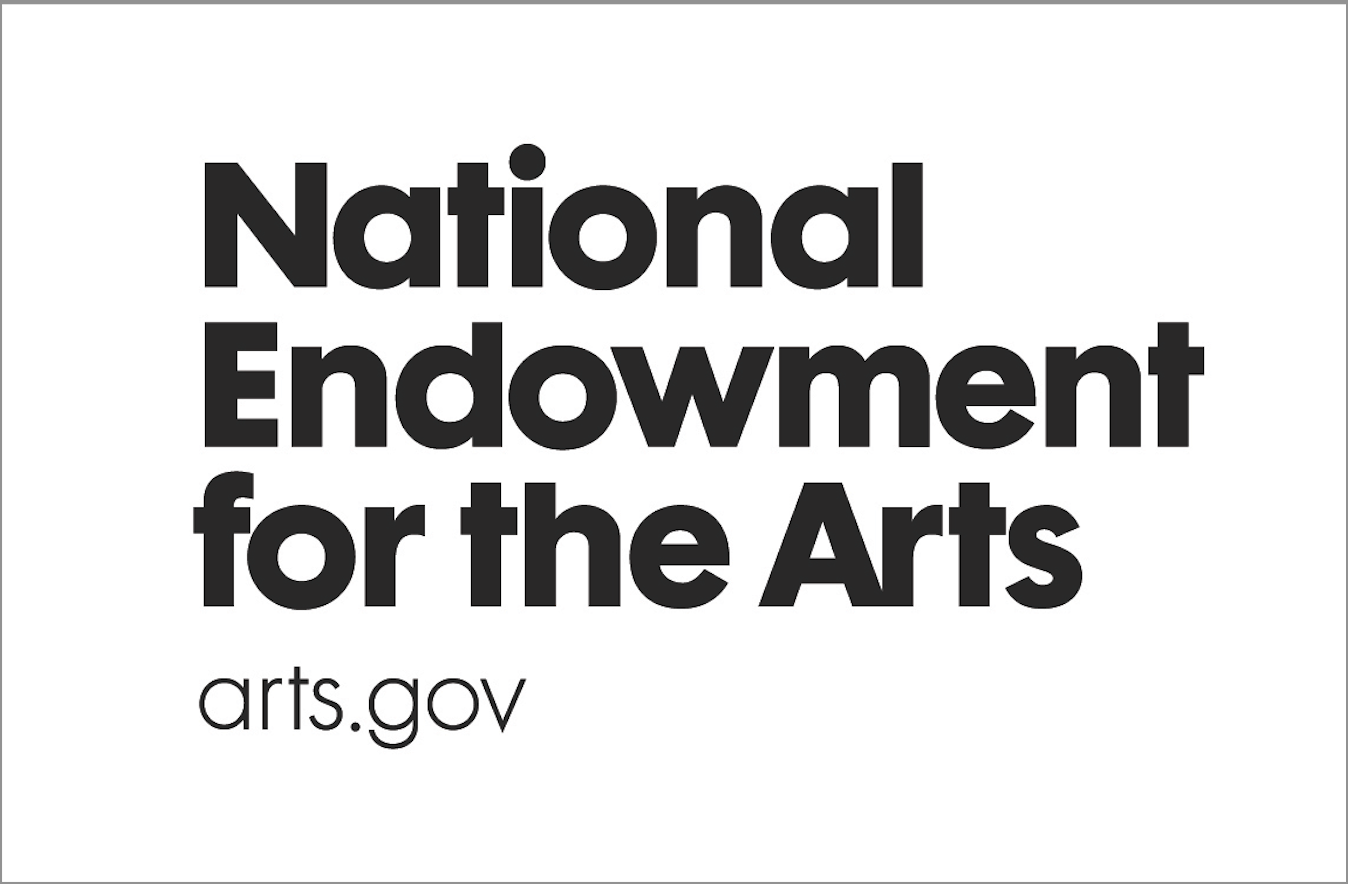Each R&D project begins with a vital question and a deep yearning to know more about an idea, a community, an event or a phenomenon. This insatiable curiosity powers the engine of “investigative theater,” which we define broadly as a creative process of inquiry that feeds and informs a new theatrical work. Over the course of nine months, the R&D members’ investigations might take many turns down the path of discovery. Processes could yield dead ends, breakthroughs and revelations that surprise, challenge and inspire. This year, the projects have utilized different investigative methods, including journeys through personal histories and historical research, trips to grave sites, online Tumblr odysseys , as well as interviews with reality television stars, scientists and anarchists. Artistic transformation happens week to week as the findings of these investigations take shape through text, song, stories and shared conversation. I love the dogged determination of writers, composers and directors as they pursue neither definitive answers nor confirmed assumptions, but deeper, more nuanced understandings of the topics at hand and what they reveal about the world around us.

The schedule for the May 2016 FINDINGS Series. Image Credit: Stephen Cyr.
The FINDINGS Series, running May 9-20, gives our artists a chance to share their works-in-progress projects with the public. This year we have eight presentations — our most ever. Over the course of the development process, the projects often speak to one another, as common themes appear across diverse topics. This year, large questions about the nature of identity emerged. What defines who we are? Our persona? Our community? Our DNA?
This season, two artists used science as an entry point into their investigations. In “The Immortals,” by Ken Urban and directed by Lee Sunday Evans, an Ivy League professor researches the true story of Henrietta Lacks and her “immortal” HeLa cells. Though Lacks died in 1951 of cervical cancer, sample cells taken without her permission (and with no compensation provided to her family) have been used for decades in important medical research. Urban’s work explores questions of ethics, racial discrimination, desire and how we define the building blocks of who we are. Sam Chanse’s “what you are now,” directed by Colette Robert, uses the science of memory as inspiration to tell the story of a Cambodian woman struggling with the traumas of her past as she raises her children in the United States. The work engages with current neuroscience and ideas of family identity to explore how past and present often co-mingle. If memories are malleable, would it be possible and preferable to alter the most painful ones? How might that affect our personal narratives and sense of identity?

Claire Kiechel and Dominic Finocchiaro at an R&D meeting. Photo Credit: Megan McClain.
This year’s FINDINGS presents two projects that dive deeply into the ways in which identities are created and shaped through performance. In “Paul Swan is Dead & Gone,” playwright Claire Kiechel mines the unpublished memoir of her great-great uncle, Paul Swan, who was the subject of an Andy Warhol film and once called the most beautiful man in the world. Though his work as a sculptor, dancer, actor, and poet drew the attention of Warhol and Marcel Duchamp, Swan’s wish to find his place as a star in the firmament of legendary artists was never realized. Claire’s piece explores the tension between a desired self-image sought through a carefully crafted persona and the public perception of talent. Just what constitutes “good” and “bad” art? The project, directed by Dan Safer, investigates the unique ways in which “bad” art can leave us utterly spellbound. Dominic Finocchiaro’s “Gold Person,” directed by Suzanne Agins, treads similar territory as it follows Bobby, a former reality television star who is now struggling to extend his 15 minutes of fame. As a product of the reality television machine, Bobby learned to commodify himself, but when producers stop buying into the Bobby brand, he must find a new way forward. The piece makes it impossible to look away from this train wreck of a performer whose bombastic bravado is undergirded by authentic vulnerability. “Gold Person” takes a thoughtful look at both the desire for fame and the very human need for recognition as it explores the difference between being watched and being seen. Read more about Dominic’s investigation here.
By turning their attention to unheard stories, two of the pieces this year strive to make the invisible visible. Susan Stanton’s “Hotel,” directed by Sash Bischoff, was originally inspired by the Dominique Strauss-Kahn scandal, in which the former director of the International Monetary Fund successfully discredited a hotel housekeeper who accused him of sexual assault. The power dynamics at play in that incident lead Susan to expand her investigation to include interviews of those working behind the scenes in many capacities at New York City luxury hotels. Susan has populated her “Hotel” with these underrepresented stories and, in so doing, has captured the miraculous in the mundane, the epic in the familiar and the exquisite in the everyday. Ty Defoe and Tidtaya Sinutoke also seek to highlight untold stories by giving voice to the lost histories of the spirits of Hart Island. Just off the Bronx (though absent from many maps) lies Hart Island, New York City’s potter’s field where nearly one million people are buried. From 1869 to present the day, bodies of stillborn infants, as well as the unclaimed, the undocumented and the impoverished have been interred in mass graves there. The creative team has drawn upon historical research and site visits to inspire their songs and text. Their piece, “Hart Island Requiem,” directed by Sanaz Ghajar, pays tribute and attention to those who were lost, marginalized or forgotten in their lives and in their deaths.

Gordon Leary, Benjamin Kamine and Julia Meinwald at an R&D meeting. Photo Credit: Megan McClain.
Two projects this year investigated a number of specific communities through interviews and research both in the field and online. EllaRose Chary, Jay Stull and Jordan Mahome, all long-time Civilians artists, have turned their focus on the impact of increased police militarization in “Power State.” Based on interviews from people across the country involved in grassroots protest movements — namely, Black Lives Matter, Occupy and a group of anarcho-capitalists in New Hampshire — the piece examines the ways in which state power functions in the contemporary American landscape. The team also curated the Let Me Ascertain You cabaret Anarchy!, drawing upon material gathered during their investigation. Read more about their process here. Gordon Leary, Julia Meinwald and Benjamin Kamine round out the FINDINGS series with “REB + VoDKa + ME,” a piece inspired by Columbiners, an internet community of fans of the Columbine killers. Comprised of a narrative collage of songs that are at once haunting and unnervingly catchy, the piece fleshes out the nuanced shades of teenage loneliness in a digital age that provides both camaraderie and isolation online. Read more about the team’s research process here.
After many months of research and development, we’re excited to share these FINDINGS. You can read more about the shows and get the full schedule and locations here. If you are a project creator or director, applications for next season’s group are open and due June 15, 2016. Click here to apply.
Post Views:
796





